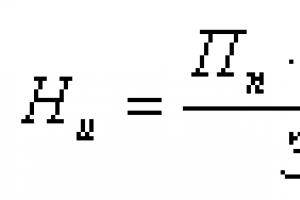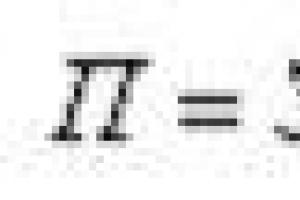References to maps of climatic zones (or more precisely, winter hardiness zones, or frost-hardiness zones of plants) are often found in international gardening reference books. Winter hardiness zones, or frost resistance zones - handy tool for a gardener who will help you navigate when choosing plants and, if necessary, find suitable way winter shelter
Climatic zones - zones of winter hardiness or frost resistance of plants
Definition 13 climatic zones (zones of winter hardiness / frost resistance of plants) was developed by the US Department of Agriculture ( USDA) based minimum winter temperatures by region. Initially climate zone system used for needs Agriculture, and later it began to be actively used by gardeners. This system is primarily convenient for large countries such as Russia, the USA and Canada, whose territories lie in several climatic zones.
Minimum winter temperatures, on the basis of which they are determined climatic zones (frost resistance zones) depend both on the geographical latitude of the region and on its proximity to the ocean, as well as on the presence of mountains, lowlands, reservoirs and other relief features. For example, the south of England and Kyiv are located at approximately the same geographic latitude. At the same time, the south of England belongs to frost resistance zone 9 due to its proximity to the Atlantic Ocean and the warm Gulf Stream, and Kyiv is located on the continent, far from the ocean and belongs to climate zone 5.
When deciding to purchase a particular plant, you should keep in mind that the appropriate winter/frost hardiness zone does not guarantee that the plant will grow well in your garden. Gardeners should consider factors such as soil type, precipitation levels, day/night temperature differences, daylight hours, heat and humidity. Many regions with completely different types climates fall into the same climatic zone (frost resistance zone / winter hardiness zone) due to the coincidence of maximum and lowest temperatures. However, not all plants will grow and develop equally well in any of these regions.
Table of 13 USDA climate zones (plant hardiness zones)
| USDA climate zone | Lowest temperatures (°C) |
|---|---|
| Zone 1 | -45 and below |
| Zone 2 | from -45 to -40 |
| Zone 3 | from -40 to -34 |
| Zone 4 | from -34 to -29 |
| Zone 5 | from -29 to -23 |
| Zone 6 | from -23 to -18 |
| Zone 7 | from -18 to -12 |
| Zone 8 | from -12 to -7 |
| Zone 9 | from -7 to -1 |
| Zone 10 | -1 to +4 |
| Zone 11 | from +4 to +10 |
| Zone 12 | from +10 to +16 |
| Zone 13 | from +16 to +21 |
Climatic zones of Russia and the former USSR, map (USDA frost resistance zones)
Unfortunately, detailed zones of frost resistance/winter hardiness of plants have not been developed either in the USSR or in Russia. Based on the USDA map of world climatic zones and the map of European climatic zones (see below), it is possible to determine the climatic zones (zones of winter hardiness / cold resistance of plants) of Russia and the former USSR. This is the map I put together using graphic materials from the Internet:

USDA Hardiness Zones
The specified climatic zoning of territories is an artificial division of places where plants are grown, based on the ability of plants to survive in winter conditions. This division is based on many years of studying winter temperatures.
The assignment of a plant to a particular zone is made on the basis of knowledge about the variety’s requirements for growth and development conditions. However, even within the same zone, climatic conditions may vary. It is well known that the south side of the house is always warmer, and in a place protected from the winds (for example, a courtyard or urban area), even the largest “sissies” can grow. Therefore, the given zoning of plant varieties is quite conditional.
With the help of proper placement of plants (in a warm and windless place), as well as the use of covering materials (spunbond, foliage, spruce branches, hilling, etc.) and “laying” shoots to the ground for the winter, you can increase the climatic zone of your site by 1-2 units. This also helps to improve the soil regime (for example, adding clay to sandy soils, adding organic fertilizers, covering the soil with manure, mulching with sawdust, peat, etc.). Then, for example, in the conditions of the third climatic zone, it is possible to grow varieties belonging to the fourth or fifth zone without any problems. In addition, special events such as whitewashing trunks fruit trees in November, shading evergreen plants with covering material in February or in the fall will help avoid frost damage and sunburn in conditions of sudden temperature changes and weather changes.
Frost resistance zone table:

| Zone | From | Before |
| 0 | ||
| 1 | −45.6 °C | −53.9 °C |
| 2 | −40 °C | −45.6 °C |
| 3 | −34.4 °C | −40 °C |
| 4 | −28.9 °C | −34.4 °C |
| 5 | −23.3 °C | −28.9 °C |
| 6 | −17.8 °C | −23.3 °C |
| 7 | −12.2 °C | −17.8 °C |
| 8 | −6.7 °C | −12.2 °C |
| 9 | −1.1 °C | −6.7 °C |
| 10 | −1.1 °C | +4.4 °C |
| 11 | +4.4 °C | +10 °C |
| 12 | >+10 °C |
Winter hardiness and frost resistance of plants- the concepts are different, although close in meaning.
Winter hardiness- this is the ability of plants to withstand a complex of environmental influences during the winter and early spring periods. This includes the ability to withstand spring burns, low temperatures, damping off, soaking, and the ability to withstand frequent temperature changes.
Frost resistance- This is only the plant’s ability to tolerate low temperatures.
Frost resistance zones (USDA zones)
These are the areas into which the territory is divided depending on the average annual minimum temperature. These data were obtained on the basis of many years of statistical observations, but at present this division is subject to serious criticism.
For the entrance area it is better to use resistant plants that are decorative both in summer and winter. There is no point in listing them, because... There are a lot of such plants in garden centers and new ones appear every year.
In general, there is a tendency that those plants that were previously considered not particularly hardy are doing well in colder climates.

So, rhododendron does not look particularly attractive at sub-zero temperatures.
Example: in Belarus, when correct landing Mahonia, holly, rhododendrons, some roses, boxwood, lavender and other plants of higher climatic zones winter well without shelter.
Some areas by frost resistance zones:

Some plants by frost hardiness zones

Frost resistance zones
Frost resistance zones
Frost resistance zones (USDA zones) - geographically defined, vertically zoned areas based on the principle of the average annual minimum temperature based on long-term statistical observations. Frost resistance zones serve as limiting climatic factor for the life of plants and, despite the subjectivity of such an assessment, are widely used in practice to describe suitable conditions for the natural distribution or cultivation of certain representatives of the flora.
Due to the intensive introduction of new species and forms of decorative plants for Russia garden plants, the issue of the sustainability of introduced species is currently extremely relevant and widely discussed. It is known that it is not the average level of winter temperatures that has a detrimental effect on plants, but the most severe, although short-term, frosts. In practice, the average of the absolute minimum air temperatures is used as an indicator of frost danger. The same climatic indicator was taken as a basis by the American dendrologist Alfred Roeder, whose reference book Manual of cultivated trees and shrubs hardy in Hoth America is still relevant. His reference book provides a map of the United States and Canada, highlighting 7 zones of winter resistance of woody plants. For more than two and a half thousand species, a possible zone of their cultivation in open ground is noted.
Later this system was re-analyzed, refined and supplemented. Now there are 11 zones: zone 1 - Arctic, 10 and 11 - tropics. In recent decades, the system of hardiness zones has been extended to Western Europe. Gardeners and dendrologists in the United States and Canada soon after its creation adopted the concept of plant hardiness zones, with all its advantages and disadvantages. And over many years, largely through direct trial and error, most species of trees and shrubs have been assessed in terms of their assignment to a particular zone. If you use this method, then St. Petersburg is located almost on the border of zones 4 and 5.
After Raeder, the most complete summary of tree introduced species introduced into culture was compiled by the famous German dendrologist Gerd Krüssmann. In his monograph European map Winter plant hardiness zones show that most Western European nurseries are located in zones 6 or 7, with a minimum temperature of - 12 °C to - 23 °C. A most of The territories of Holland, Belgium, France and England are in zone 8 with minimum air temperatures ranging from -7° to -12 °C. The outskirts of St. Petersburg correspond to an isotherm of -29°, delimiting the fourth zone from the fifth.
USDA zones
The current division into zones was developed by the US Department of Agriculture and subsequently became widely used (outside the United States - mostly in horticultural literature).
There are thirteen main frost resistance zones from 0 to 12, and as the zone number increases, the average annual minimum temperature increases (zone 0 is the coldest).
It is believed that the territories middle zone Russia corresponds to zone No. 5 and those below.
It must be taken into account that the winter hardiness of plants depends on many factors, so the division into frost resistance zones should be taken as indicative information. In each zone there may be many areas with milder or more severe microclimates. Plants are most frost-resistant at the beginning of winter (December, early January); as spring approaches, their frost resistance decreases.
| Zone | From | Before | |
| 0 | a | < −53.9 °C (−65 °F) | |
| b | −51.1 °C (−60 °F) | −53.9 °C (−65 °F) | |
| 1 | a | −48.3 °C (−55 °F) | −51.1 °C (−60 °F) |
| b | −45.6 °C (−50 °F) | −48.3 °C (−55 °F) | |
| 2 | a | −42.8 °C (−45 °F) | −45.6 °C (−50 °F) |
| b | −40 °C (−40 °F) | −42.8 °C (−45 °F) | |
| 3 | a | −37.2 °C (−35 °F) | −40 °C (−40 °F) |
| b | −34.4 °C (−30 °F) | −37.2 °C (−35 °F) | |
| 4 | a | −31.7 °C (−25 °F) | −34.4 °C (−30 °F) |
| b | −28.9 °C (−20 °F) | −31.7 °C (−25 °F) | |
| 5 | a | −26.1 °C (−15 °F) | −28.9 °C (−20 °F) |
| b | −23.3 °C (−10 °F) | −26.1 °C (−15 °F) | |
| 6 | a | −20.6 °C (−5 °F) | −23.3 °C (−10 °F) |
| b | −17.8 °C (0 °F) | −20.6 °C (−5 °F) | |
| 7 | a | −15 °C (5 °F) | −17.8 °C (0 °F) |
| b | −12.2 °C (10 °F) | −15 °C (5 °F) | |
| 8 | a | −9.4 °C (15 °F) | −12.2 °C (10 °F) |
| b | −6.7 °C (20 °F) | −9.4 °C (15 °F) | |
| 9 | a | −3.9 °C (25 °F) | −6.7 °C (20 °F) |
| b | −1.1 °C (30 °F) | −3.9 °C (25 °F) | |
| 10 | a | −1.1 °C (30 °F) | +1.7 °C (35 °F) |
| b | +1.7 °C (35 °F) | +4.4 °C (40 °F) | |
| 11 | a | +4.4 °C (40 °F) | +7.2 °C (45 °F) |
| b | +7.2 °C (45 °F) | +10 °C (50 °F) | |
| 12 | a | +10 °C (50 °F) | +12.8 °C (55 °F) |
| b | > +12.8 °C (55 °F) | ||
Examples
see also
Notes
Literature
- Ir. M. N. A. Hofman; Drs. M.V.M. Raveslot Winterhardheid van boornkwekeriioewassen. - 1998.
Links
- Data on winter hardiness zones in the Encyclopedia of Ornamental Garden Plants (Retrieved January 26, 2009)
- Climatic zoning. Winter hardiness zones. on the website DIY.ru
Wikimedia Foundation. 2010.
Zoning cultivated plants, is directly related to the definition of the so-called frost resistance zones - climatic regions to which they can correspond, as acceptable, from the standpoint of planting extensive (industrial) plantings. This concept is more strict than the general possibility of introduction various types plants, which allows for more extensive experiments under favorable microclimate conditions.
At the moment, the generally accepted international (American) classification is USDA zones, which contains 11 such gradients with transitional subzones a) and b) (), which, despite its limited flexibility, is still quite often used in our country as a guide.
Most of the territory of the temperate zone (middle zone), with active agricultural activities, fits into the indicators of 3-7 climatic zones of frost resistance. A broad prospect for the introduction of various foreign crops of a temperate climate begins with zone 5, which corresponds to the scale of the average of the absolute minimums: −23.3 °C .. −28.9 °C
There is confusion in the understanding of these critical indicators for determining frost resistance zones, which are used in agrometeorology for agroclimatic zoning.
The first fundamental calculated parameter is the absolute annual minimum indicator, which characterizes the short-term (from several hours or more) setting of cold fronts, which can lead to significant freezing or complete death of the plant. It can only be considered in the context of a limited time frame - or for the period of all available on this moment observations (often, this is no more than 60-80 years of history), or within the initially specified framework: the latest climate norm - a period of 30 years of observations, or an arbitrary period - 20, 40 or more years. To take into account the latest dynamics of climate change, a period of up to 10-20 years is considered. Considering what has been said, an answer in the spirit of “we don’t have -40” is not correct by definition, in general case, such words do not characterize anything.
Another calculated parameter is more indicative - the average of the absolute minimums (as a rule, it is 1.5 times less than the previous indicator). To calculate it, absolute minimums are taken for each year, for the required period (usually over the last 10-20 years of observations) and averaged. This parameter and is accepted as a unit of account in determining USDA zones.
Let's look at an example.
Let's take the absolute minimum data (Tn indicator) for the State Botanical Garden (GBS) of Moscow (the observation station at the All-Russian Exhibition Center is located several kilometers from the southern entrance), as a data source we will use the resource - http://rp5.ru/, look in the sections: Weather archive at the weather station / Weather statistics:
2005 .. -21.5 °C
2006 .. -30.8 °C
2007 .. -23.0 °C
2008 .. -18.3 °C
2009 .. -22.1 °C
2010 .. -25.9 °C
2011 .. -26.4 °C
2012 .. -28.5 °C
2013 .. -18.3 °C
2014 .. -25.4 °C
We get: the average of the absolute minimums over the last 10 years of observations will be (add all values and divide by 10): -24 °C
Using the table of values, we will determine for Moscow GBS compliance with frost resistance zone 5b, which is typical only for the microclimate conditions of the city (the general frost resistance zone for the Moscow region will be an order of magnitude lower).
This frost resistance zone, if we take into account the latest climatic norm - 30 years of observations, runs, approximately, along the border: Minsk - Gomel - Bryansk - Kursk - Belgorod - Voronezh, which is the border, for example, of a possible industrial crop of cherries, but what else not enough for industrial apricot culture (varieties obtained on the basis of the common apricot genotype), or walnut.
One should always distinguish general recommendations on the introduction (introduction) of certain plant species within one climatic region - the zone of frost resistance, and the possibilities of a specific microclimate. As a rule, within the framework of one generalized zone of frost resistance, it is always possible to find (select): both more favorable, already transitional conditions for the next, more favorable neighboring zone, and aggravated conditions that should be perceived adjusted for one zone below. Also, the frost resistance of a tree considered as part of a forest biocenosis (forest population) and a separate open one is not the same thing. personal plot. The forest, on its own, is already the fundamental basis for the formation of microclimate and other factors that contribute to more adequate acclimatization of the species.
It should be taken into account that many non-regional plants exhibit increased sensitivity to environmental conditions uncharacteristic for them (humidity regimes, solar radiation, the nature of seasonal changes, etc.), which affects, among other things, the ability to reveal the full potential of the inherent genotypic frost resistance. For this reason, often in foreign nurseries, in relation to such foreign crops, two frost resistance zones are simultaneously designated - one for natural growing conditions (within their distribution area), and the second - in the introduction of specific local conditions, which, nominally (by default ) is set to -1 zone lower.
Work on reseeding (reproduction in generations) in new conditions of introduced species, as a rule, serves the purpose of normalizing (unlocking the full potential) genotypically inherent frost resistance, which for many plants is a realistically feasible task. But still, this reserve should not be unnecessarily exaggerated. In the general case, it cannot be higher than the frost resistance of a particular species, which manifests itself in natural conditions along the northern border of its distribution, and certainly, it can be most fully revealed only in native conditions. So, for example, depending on the place of growth (nature of naturalization), as well as the source of seed material, in a situation of full passage of all phases of vegetation development, the manifested frost resistance of the Manchurian nut, allowing it to go through the stage of winter dormancy without significant damage to the above-ground part, can vary from - 44 °C to -52 °C and more degrees. At the same time, the ability, let’s move on to the example of the walnut, to endure winters with temperatures down to -40 °C in places of industrial culture (southern Ukraine, for example), and somewhere in the Moscow region, is completely different.
It would be more correct, as is recommended by many reference books, when determining frost resistance zones, to take into account another important interrelated indicator - the sum of active temperatures during the growing season (for temperate zone, most often they focus on the sum of positive temperatures of more than +10 °C), but this is a topic for another discussion.
Mar 3, 2014 Alexei








